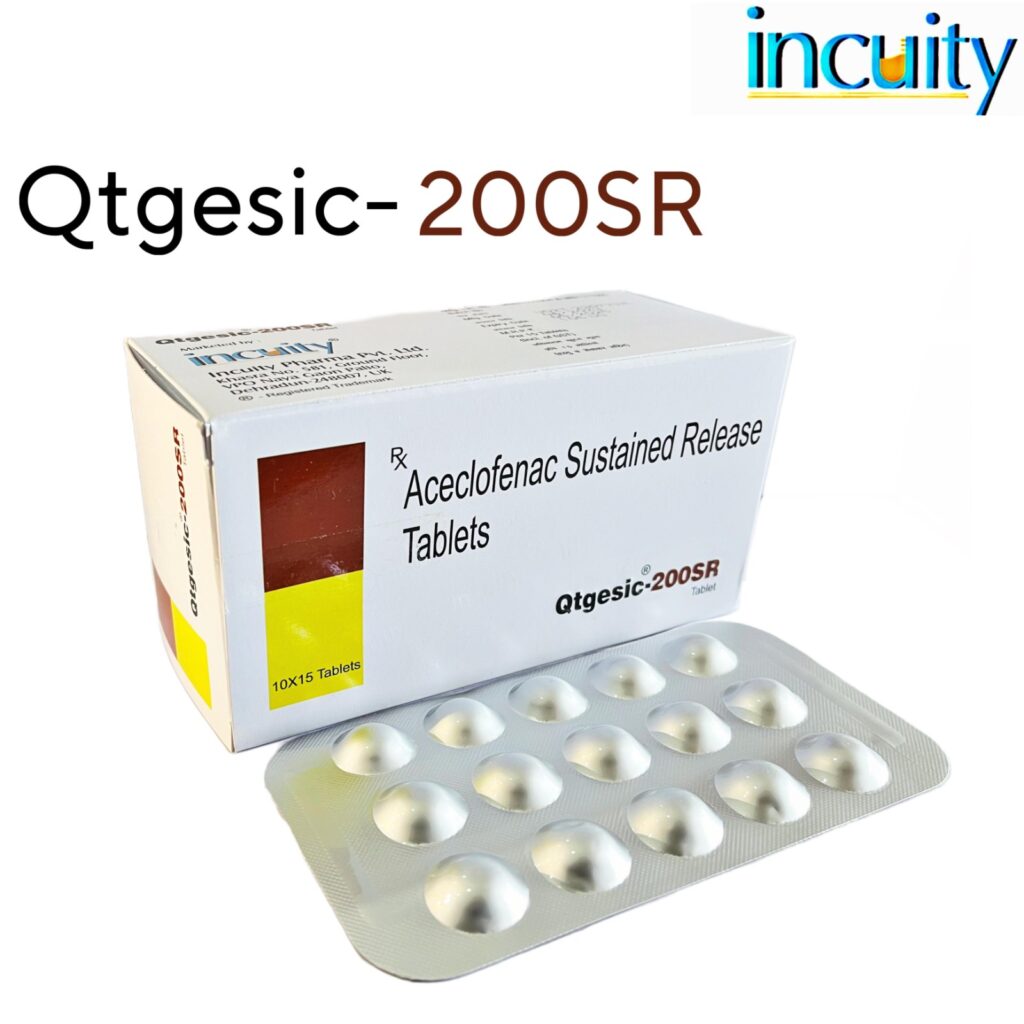Description
Aceclofenac 100mg and Paracetamol 325mg are common medications used to relieve pain and reduce inflammation. Aceclofenac is a non-steroidal anti-inflammatory drug (NSAID) that helps alleviate pain and inflammation by inhibiting certain enzymes. Paracetamol, on the other hand, is a mild analgesic and antipyretic that reduces pain and fever. When combined, they offer a more comprehensive approach to pain relief. This combination can be particularly effective in conditions like arthritis, where pain and inflammation often coexist. However, it’s important to use them under medical supervision, as both medications can have potential side effects and interactions with other drugs.
Benefits of using Aceclofenac 100mg and Paracetamol 325mg
The combination of Aceclofenac 100mg and Paracetamol 325mg offers several benefits for pain management. Aceclofenac, as a non-steroidal anti-inflammatory drug (NSAID), provides effective relief from inflammation and pain, making it suitable for conditions like arthritis. Paracetamol complements this by providing additional analgesic and antipyretic properties, reducing pain and fever. Together, they offer a more comprehensive approach to pain relief, making it especially useful in moderate to severe pain associated with various conditions. However, it’s important to use these medications under medical guidance, as they might have side effects and potential interactions with other drugs, and long-term use should be supervised by a healthcare professional.
How to Use Aceclofenac 100mg and Paracetamol 325mg
To use Aceclofenac 100mg and Paracetamol 325mg, follow these guidelines:
- Consult a healthcare professional: Seek medical advice before using this combination, especially if you have any underlying health conditions or are taking other medications.
- Dosage: Take the prescribed dose as directed by your doctor. It is typically taken with or after a meal to reduce stomach irritation.
- Do not exceed recommended doses: Avoid taking more than the prescribed amount to prevent potential side effects or complications.
- Stay hydrated: Drink adequate water while using these medications to help minimize gastrointestinal issues.
- Regular monitoring: Keep track of your response and any side effects. If you experience unusual symptoms, consult your healthcare provider.
- Avoid long-term use: These medications are generally not meant for extended use; consult your doctor for alternatives for chronic pain management.
How Aceclofenac 100mg and Paracetamol 325mg Works
Aceclofenac 100mg and Paracetamol 325mg work in tandem to provide effective pain relief and reduce inflammation. Aceclofenac, a non-steroidal anti-inflammatory drug (NSAID), inhibits enzymes responsible for inflammation, alleviating pain and swelling. Paracetamol, an analgesic and antipyretic, affects pain receptors in the brain, reducing pain and fever. Together, they offer a dual-action approach to pain management. Aceclofenac targets the root cause of pain, while Paracetamol addresses pain perception. This combination is beneficial for conditions like osteoarthritis or musculoskeletal pain, where pain and inflammation coexist. However, it’s important to use them under medical guidance due to potential side effects and interactions.
Precautions while Using Aceclofenac 100mg and Paracetamol 325mg
When using Aceclofenac 100mg and Paracetamol 325mg, precautions are essential.
- Medical consultation: Always consult a healthcare professional before use, especially if you have underlying health conditions, liver or kidney problems, or are taking other medications.
- Dosage adherence: Follow the prescribed dose carefully; do not exceed it, as these medications can have adverse effects, particularly on the liver and stomach.
- Avoid alcohol: Refrain from alcohol consumption, as it can increase the risk of liver damage when combined with Paracetamol.
- Short-term use: Limit usage to the recommended duration, as long-term use might lead to complications.
- Monitor side effects: Be vigilant for signs of gastrointestinal problems, allergic reactions, or any unusual symptoms, and seek medical advice if they occur.
- Stay hydrated: Drink ample water to reduce potential gastrointestinal issues.
Side Effects of Using Aceclofenac 100mg and Paracetamol 325mg
The combination of Aceclofenac 100mg and Paracetamol 325mg can have side effects, including gastrointestinal issues such as nausea, stomach pain, or ulcers. Both medications might impact the liver, potentially causing liver damage or abnormalities in long-term, high-dose usage. Paracetamol, especially when combined with alcohol, can lead to severe liver problems. Allergic reactions like skin rashes and breathing difficulties might occur in rare cases. Kidney problems and blood disorders are possible, although uncommon. It’s crucial to use these medications under medical supervision and adhere to prescribed dosages to minimize these risks and seek prompt medical attention if you experience adverse effects.












